
Lloyd Aldrich was an American civil engineer from Los Angeles who ran against Fletcher Bowron in 1949 for Los Angeles mayor.

Lloyd Aldrich was an American civil engineer from Los Angeles who ran against Fletcher Bowron in 1949 for Los Angeles mayor.
Lloyd Aldrich was born in Marion, Kansas on July 1, 1886. When Aldrich was three months old, his parents moved to Los Angeles, California and when he was 12 he was orphaned and ended up living with his older brother in Colorado. [1]
Aldrich graduated from the University of Illinois at Urbana–Champaign. [1]
As a college graduate, he traveled west to work on engineering projects in Colorado and California. Aldrich was fortunate enough to be one of President Teddy Roosevelt's hunting partners. [1]
In the late 1930s, the Government in the city of Los Angeles undertook a regional transportation planning effort, forming the basis for the first and largest freeway system build in the United States. [2] Lloyd Aldrich was the chief engineer for this project, and had a plan to create a wide expressway and transit system to link downtown Los Angeles with the suburbs. His plan was thoughtful, and it was indicative of using the ideas of the people in an effort to involve them in the very infrastructure they were using. However, his plan was quickly halted because there wasn't enough funding. As a result, the government overtook the project.
Once Aldrich was retired, in 1955, he took part in private consulting work. [1]

William Mulholland was an Irish American self-taught civil engineer who was responsible for building the infrastructure to provide a water supply that allowed Los Angeles to grow into the largest city in California. As the head of a predecessor to the Los Angeles Department of Water and Power, Mulholland designed and supervised the building of the Los Angeles Aqueduct, a 233-mile-long (375 km) system to move water from Owens Valley to the San Fernando Valley. The creation and operation of the aqueduct led to the disputes known as the California Water Wars. In March 1928, Mulholland's career came to an end when the St. Francis Dam failed just over 12 hours after he and his assistant gave it a safety inspection.

The Arroyo Seco Parkway, also known as the Pasadena Freeway, is one of the oldest freeways in the United States. It connects Los Angeles with Pasadena alongside the Arroyo Seco seasonal river. Mostly opened in 1940, it represents the transitional phase between early parkways and later freeways. It conformed to modern standards when it was built, but is now regarded as a narrow, outdated roadway. A 1953 extension brought the south end to the Four Level Interchange in downtown Los Angeles and a connection with the rest of the freeway system.

Route 110, consisting of State Route 110 (SR 110) and Interstate 110 (I-110), is a state and auxiliary Interstate Highway in the Los Angeles metropolitan area of the US state of California. The entire route connects San Pedro and the Port of Los Angeles with Downtown Los Angeles and Pasadena. The southern segment from San Pedro to I-10 in downtown Los Angeles is signed as I-110, while the northern segment to Pasadena is signed as SR 110. The entire length of I-110, as well as SR 110 south of the Four Level Interchange with US Route 101 (US 101), is the Harbor Freeway, and SR 110 north from US 101 to Pasadena is the historic Arroyo Seco Parkway, the first freeway in the western United States.

The Colorado River Aqueduct, or CRA, is a 242 mi (389 km) water conveyance in Southern California in the United States, operated by the Metropolitan Water District of Southern California (MWD). The aqueduct impounds water from the Colorado River at Lake Havasu on the California-Arizona border, west across the Mojave and Colorado deserts to the east side of the Santa Ana Mountains. It is one of the primary sources of drinking water for Southern California.

Frank Lloyd Wright Jr., commonly known as Lloyd Wright, was an American architect, active primarily in Los Angeles and Southern California. He was a landscape architect for various Los Angeles projects (1922–1924), provided the shells for the Hollywood Bowl (1926–1928), and produced the Swedenborg Memorial Chapel at Rancho Palos Verdes, California (1946–1971). His name is frequently confused with that of his more famous father, Frank Lloyd Wright.

Benjamin Robert Rich was an American engineer and the second Director of Lockheed's Skunk Works from 1975 to 1991, succeeding its founder, Kelly Johnson. Regarded as the "father of stealth", Rich was responsible for leading the development of the F-117, the first production stealth aircraft. He also worked on the F-104, U-2, A-12, SR-71, and F-22, among others.

Desert Center is a census designated place in the Colorado Desert in Riverside County, California. It is in southern California, between the cities of Indio and Blythe at the junction of Interstate 10 and State Route 177, about halfway between Phoenix and Los Angeles. The ZIP Code is 92239, and the community is in telephone area codes 442 and 760. The elevation is 656 feet (200 m). The population was 204 at the 2010 census.

Robert S. Huff is an American businessman and politician who was the California State Senate minority leader and Senate Republican leader from January 5, 2012, until August 27, 2015. He represented the Senate's 29th District, which includes portions of Los Angeles, Orange, and San Bernardino counties.
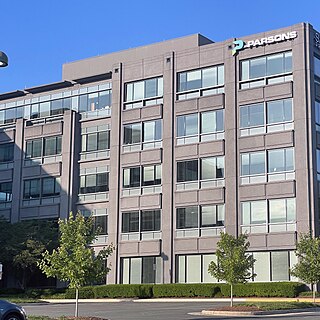
Parsons Corporation is an American multinational technology-focused defense, intelligence, security, and infrastructure engineering firm headquartered in Chantilly, Virginia. The company was founded in 1944. As of 2023, Parsons employs more than 18,000 professionals across 30 countries.

Interstate 70 (I-70) is a mainline route of the Interstate Highway System in the United States connecting Utah and Maryland. The Utah section runs east–west for approximately 232 miles (373 km) across the central part of the state. Richfield is the largest Utah city served by the freeway, which does not serve or connect any urban areas in the state. The freeway was built as part of a system of highways connecting Los Angeles and the Northeastern United States. I-70 was the second attempt to connect southern California to the east coast of the United States via central Utah, the first being a failed attempt to construct a transcontinental railroad. Parts of that effort were reused in the laying out of the route of I-70.
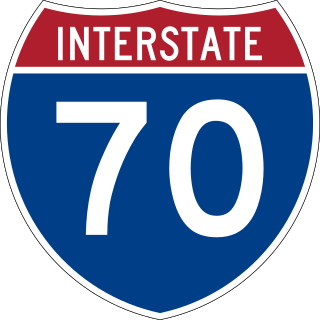
Interstate 70 (I-70) is a transcontinental Interstate Highway in the United States, stretching from Cove Fort, Utah, to Baltimore, Maryland. In Colorado, the highway traverses an east–west route across the center of the state. In western Colorado, the highway connects the metropolitan areas of Grand Junction and Denver via a route through the Rocky Mountains. In eastern Colorado, the highway crosses the Great Plains, connecting Denver with metropolitan areas in Kansas and Missouri. Bicycles and other non-motorized vehicles, normally prohibited on Interstate Highways, are allowed on those stretches of I-70 in the Rockies where no other through route exists.
Lloyd Eugene Rigler was an American businessman and philanthropist. As a businessman, he and a partner, Lawrence E. Deutsch, made Adolph's Meat Tenderizer a national brand. One of his notable philanthropic efforts was the establishment, in 1994, of the Classic Arts Showcase, a free, non-commercial television channel promoting the fine arts.

Franklin Thompson Matthias was an American civil engineer who directed the construction of the Hanford nuclear site, a key facility of the Manhattan Project during World War II.
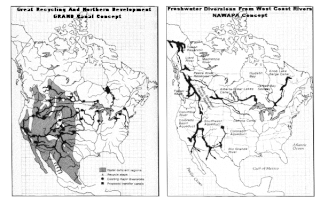
The North American Water and Power Alliance was a proposed continental water management scheme conceived in the 1950s by the US Army Corps of Engineers. The planners envisioned diverting water from some rivers in Alaska south through Canada via the Rocky Mountain Trench and other routes to the US and would involve 369 separate construction projects. The water would enter the US in northern Montana. There it would be diverted to the headwaters of rivers such as the Colorado River and the Yellowstone River. Implementation of NAWAPA has not been seriously considered since the 1970s, due to the array of environmental, economic and diplomatic issues raised by the proposal. Western historian William deBuys wrote that "NAWAPA died a victim of its own grandiosity."

Donald Curran Shoup is an American engineer and professor in urban planning. He is a research professor of urban planning at University of California, Los Angeles and a noted Georgist economist. His 2005 book The High Cost of Free Parking identifies the negative repercussions of off-street parking requirements and relies heavily on 'Georgist' insights about optimal land use and rent distribution. In 2015, the American Planning Association awarded Shoup the "National Planning Excellence Award for a Planning Pioneer."
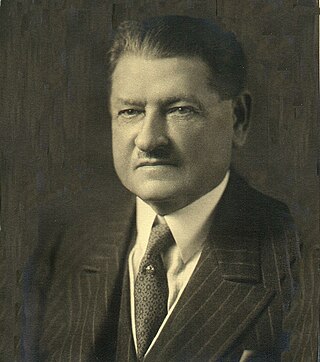
Frederick C. Finkle was an American consulting engineer and geologist. He was Chief Engineer or Consulting Engineer on eighteen major dams to impound water for domestic use, power and irrigation in California and other Western States.

Mather Howard Burnham, was an American who went by the name of Howard; his brother was the celebrated scout Frederick Russell Burnham. He traveled the world, frequently worked as a mining engineer and, during World War I, he became an intelligence officer and spy for the government of France. He had a wooden leg which he used to conceal tools for spying when he was behind enemy lines.

Guillermo "Bill" Vidal is a Cuban American author and career civil servant who served as the 44th mayor of Denver, Colorado.
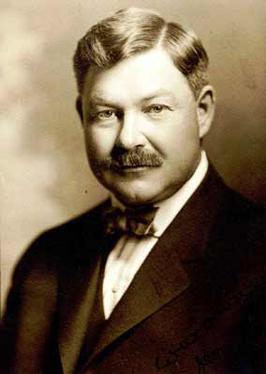
William Warren Orcutt was a petroleum geologist who is considered a pioneer in the development of oil production in California, and the use of geology in the oil industry. He is also known for his contributions to paleontology, which brought the fossils of the La Brea Tar Pits to the attention of the scientific community.
Walter Guido Vincenti was an American engineer who worked in the field of aeronautics, designing planes that could fly at hypersonic speed. He was elected as a member of several scientific societies, including the American Institute of Aeronautics and Astronautics and National Academy of Engineering. He won several prestigious awards, such as the Leonardo da Vinci Medal and the Daniel Guggenheim Medal.